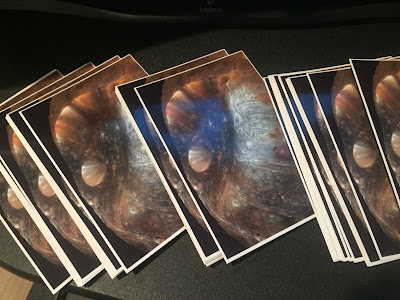A brief note on MarMoSet's power:
Mars will be near aphelion, its furthest point from the Sun, when MarMoSet arrives. Being 1.6 times further from the Sun than the Earth is, solar panels would provide only 36% of the power they would in Low Earth Orbit.
Our propulsion system, the ConstantQ hybrid electrostatic thruster, requires about 22 watts to operate. The thrusters would have to fire for extended periods due to their low thrust, so solar arrays must provide at least this much power. For this reason, we plan to use MMA Design's eHaWK array, which is the largest off-the-shelf CubeSat solar array.
 |
| Credit: MMA Design |
With two wings, each with three 20 x 30 cm panels, the eHaWK provides 26 watts of power even at Mars. The arrays are gimbaled, so they can track the Sun as MarMoSet orbits, ensuring consistent power.
Such large arrays pose challenges for PALADIN, the mission architecture that includes roving on Phobos's surface. Even if the arrays are strong enough not to be broken or mangled during landing, they could easily get caught on the terrain, prematurely ending PALADIN's mission. For this reason, the two large wings will detach from the spacecraft during its final approach of Phobos (confirmed feasible by MMA). Once landed, the nanorover no longer requires enough power to operate its thrusters, which in any case would not be capable of lifting it off Phobos's surface.
PALADIN (and possibly the orbiter-only architecture, DELPHI) would therefore also have a body-mounted solar panel on its upper 6U face. Depending on the model, this array would provide at least 4.3 - 7.2 watts at solar noon.
MarMoSet will also carry batteries to provide the spacecraft with power during nights on Phobos. We are still deciding how much storage is necessary, but are currently planning to store 40 Wh, enough to fire the thrusters at full power for nearly two hours and to provide PALADIN with power for a full Phobos day.
 |
| Credit: Clyde Space |
Depending on orbital planning and volume available, we may increase energy storage capacity. Two 10 Wh batteries would likely fit on either side of the NAC's optical tube..
That's all for now! We're currently working on flight computers, Mars capture, and nanorover motors, posts on each likely coming soon!
-Daniel


